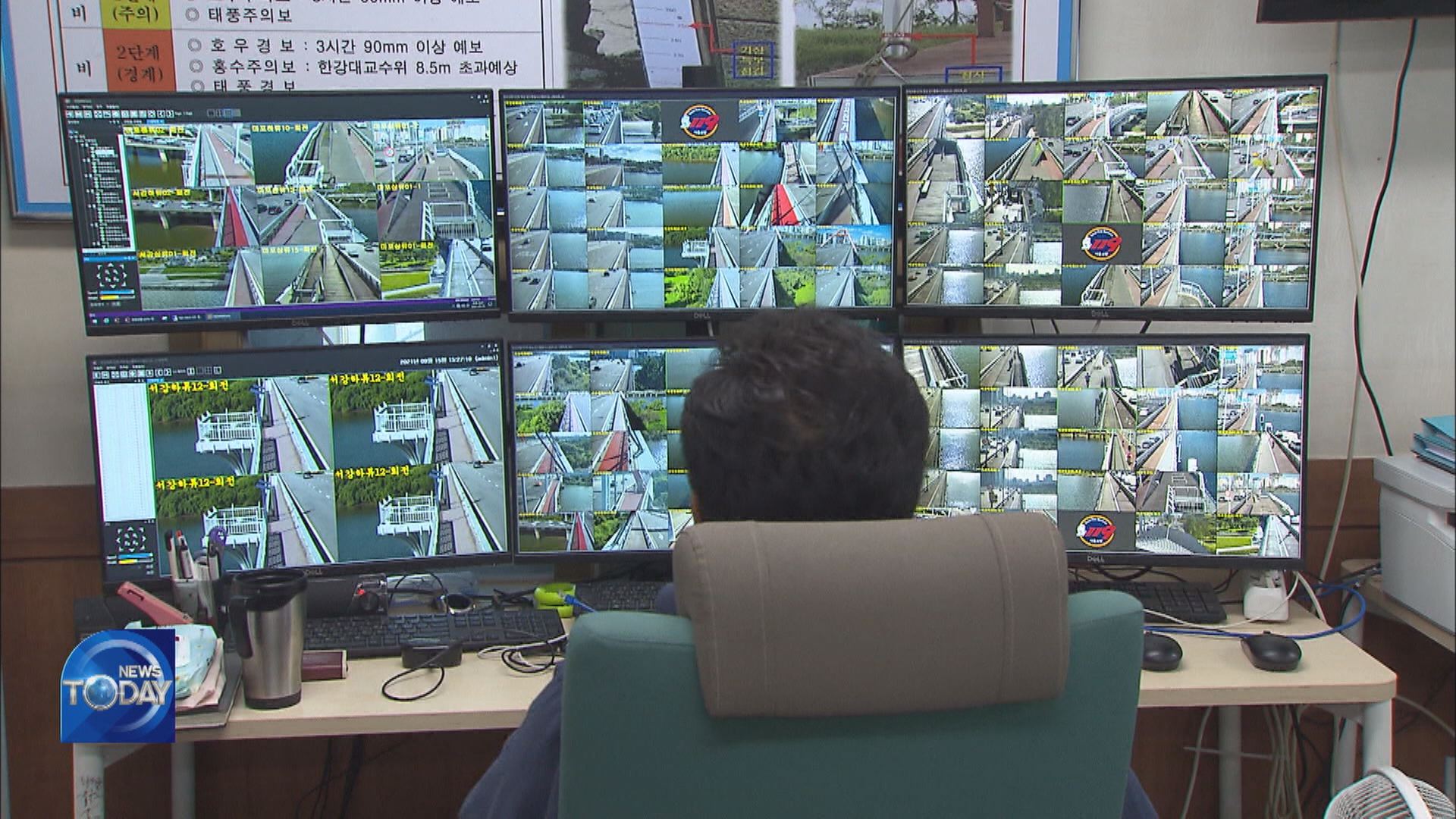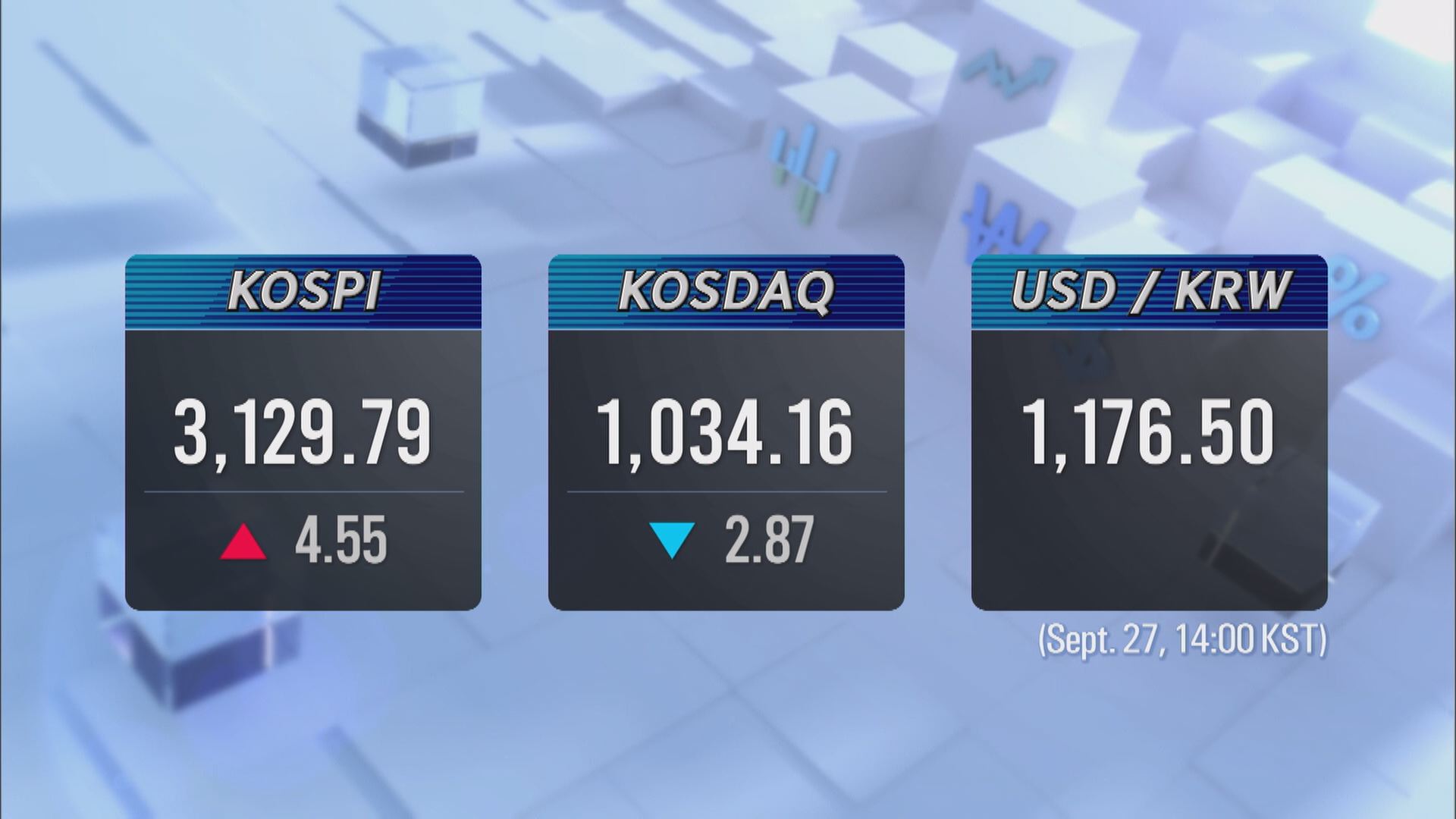FISH THAT GROW IN HIGH-TEMPERATURE WATER
입력 2021.09.27 (15:03)
수정 2021.09.27 (16:46)
읽어주기 기능은 크롬기반의
브라우저에서만 사용하실 수 있습니다.
[Anchor Lead]
Korean seas are suffering from unusually high temperatures. The water temperature of the East Sea set a record high this summer. The National Institute of Fisheries Science has been developing farmed fish that grow well in high water temperatures for the past few years but it is likely to take more time to commercialize the fish.
[Pkg]
The average sea surface temperature of the East Sea in July was 22.2 degrees Celsius. That is 2.7 degrees higher than the average temperature of the past 30 years. It was not only a 40-year high for Korea, but also a serious increase given that the average global sea surface temperature rose 0.3 degrees. The average water temperature of the East Sea in July increased about 0.9 degrees over the past 40 years, from 18.9 degrees in the 1980s to 19.8 degrees in the 2010s. The water temperature July rose dramatically, 1.5 degrees higher than in 2010, the year when the water temperature had been the highest.
[Soundbite] Kwon Min-ho(Senior Researcher, Korea Institute of Ocean Science and Technology) : "Abnormally high water temperatures are observed not only in the East Sea, but also more frequently in the South Sea."
The National Institute of Fisheries Science has been developing farmed fish that adjust well to high water temperatures since 2018. The researchers have crossbred subtropical fish species, such as giant grouper and the native saw-edged perch, or select indigenous farmed marine species that can withstand high water temperatures such as the flatfish and abalone. But there are many obstacles to overcome until fish farms can actually raise these fish species.
[Soundbite] Kim Hyun-chul(Researcher, Aquaculture Research Division, NIFS) : "The problem is moving the fish farm to an area where the fish can spend winter and then move it back after winter is over. So fish are raised only at places where the fish can withstand the cold."
The Ministry of Oceans and Fisheries has been receiving reports from fish farms that suffered damage from high water temperature. The loss amounts to over 2 billion won in the Gyeongsangnam-do region alone. Busan and other areas are still sending in their damage reports.
Korean seas are suffering from unusually high temperatures. The water temperature of the East Sea set a record high this summer. The National Institute of Fisheries Science has been developing farmed fish that grow well in high water temperatures for the past few years but it is likely to take more time to commercialize the fish.
[Pkg]
The average sea surface temperature of the East Sea in July was 22.2 degrees Celsius. That is 2.7 degrees higher than the average temperature of the past 30 years. It was not only a 40-year high for Korea, but also a serious increase given that the average global sea surface temperature rose 0.3 degrees. The average water temperature of the East Sea in July increased about 0.9 degrees over the past 40 years, from 18.9 degrees in the 1980s to 19.8 degrees in the 2010s. The water temperature July rose dramatically, 1.5 degrees higher than in 2010, the year when the water temperature had been the highest.
[Soundbite] Kwon Min-ho(Senior Researcher, Korea Institute of Ocean Science and Technology) : "Abnormally high water temperatures are observed not only in the East Sea, but also more frequently in the South Sea."
The National Institute of Fisheries Science has been developing farmed fish that adjust well to high water temperatures since 2018. The researchers have crossbred subtropical fish species, such as giant grouper and the native saw-edged perch, or select indigenous farmed marine species that can withstand high water temperatures such as the flatfish and abalone. But there are many obstacles to overcome until fish farms can actually raise these fish species.
[Soundbite] Kim Hyun-chul(Researcher, Aquaculture Research Division, NIFS) : "The problem is moving the fish farm to an area where the fish can spend winter and then move it back after winter is over. So fish are raised only at places where the fish can withstand the cold."
The Ministry of Oceans and Fisheries has been receiving reports from fish farms that suffered damage from high water temperature. The loss amounts to over 2 billion won in the Gyeongsangnam-do region alone. Busan and other areas are still sending in their damage reports.
■ 제보하기
▷ 카카오톡 : 'KBS제보' 검색, 채널 추가
▷ 전화 : 02-781-1234, 4444
▷ 이메일 : kbs1234@kbs.co.kr
▷ 유튜브, 네이버, 카카오에서도 KBS뉴스를 구독해주세요!
- FISH THAT GROW IN HIGH-TEMPERATURE WATER
-
- 입력 2021-09-27 15:03:58
- 수정2021-09-27 16:46:23

[Anchor Lead]
Korean seas are suffering from unusually high temperatures. The water temperature of the East Sea set a record high this summer. The National Institute of Fisheries Science has been developing farmed fish that grow well in high water temperatures for the past few years but it is likely to take more time to commercialize the fish.
[Pkg]
The average sea surface temperature of the East Sea in July was 22.2 degrees Celsius. That is 2.7 degrees higher than the average temperature of the past 30 years. It was not only a 40-year high for Korea, but also a serious increase given that the average global sea surface temperature rose 0.3 degrees. The average water temperature of the East Sea in July increased about 0.9 degrees over the past 40 years, from 18.9 degrees in the 1980s to 19.8 degrees in the 2010s. The water temperature July rose dramatically, 1.5 degrees higher than in 2010, the year when the water temperature had been the highest.
[Soundbite] Kwon Min-ho(Senior Researcher, Korea Institute of Ocean Science and Technology) : "Abnormally high water temperatures are observed not only in the East Sea, but also more frequently in the South Sea."
The National Institute of Fisheries Science has been developing farmed fish that adjust well to high water temperatures since 2018. The researchers have crossbred subtropical fish species, such as giant grouper and the native saw-edged perch, or select indigenous farmed marine species that can withstand high water temperatures such as the flatfish and abalone. But there are many obstacles to overcome until fish farms can actually raise these fish species.
[Soundbite] Kim Hyun-chul(Researcher, Aquaculture Research Division, NIFS) : "The problem is moving the fish farm to an area where the fish can spend winter and then move it back after winter is over. So fish are raised only at places where the fish can withstand the cold."
The Ministry of Oceans and Fisheries has been receiving reports from fish farms that suffered damage from high water temperature. The loss amounts to over 2 billion won in the Gyeongsangnam-do region alone. Busan and other areas are still sending in their damage reports.
Korean seas are suffering from unusually high temperatures. The water temperature of the East Sea set a record high this summer. The National Institute of Fisheries Science has been developing farmed fish that grow well in high water temperatures for the past few years but it is likely to take more time to commercialize the fish.
[Pkg]
The average sea surface temperature of the East Sea in July was 22.2 degrees Celsius. That is 2.7 degrees higher than the average temperature of the past 30 years. It was not only a 40-year high for Korea, but also a serious increase given that the average global sea surface temperature rose 0.3 degrees. The average water temperature of the East Sea in July increased about 0.9 degrees over the past 40 years, from 18.9 degrees in the 1980s to 19.8 degrees in the 2010s. The water temperature July rose dramatically, 1.5 degrees higher than in 2010, the year when the water temperature had been the highest.
[Soundbite] Kwon Min-ho(Senior Researcher, Korea Institute of Ocean Science and Technology) : "Abnormally high water temperatures are observed not only in the East Sea, but also more frequently in the South Sea."
The National Institute of Fisheries Science has been developing farmed fish that adjust well to high water temperatures since 2018. The researchers have crossbred subtropical fish species, such as giant grouper and the native saw-edged perch, or select indigenous farmed marine species that can withstand high water temperatures such as the flatfish and abalone. But there are many obstacles to overcome until fish farms can actually raise these fish species.
[Soundbite] Kim Hyun-chul(Researcher, Aquaculture Research Division, NIFS) : "The problem is moving the fish farm to an area where the fish can spend winter and then move it back after winter is over. So fish are raised only at places where the fish can withstand the cold."
The Ministry of Oceans and Fisheries has been receiving reports from fish farms that suffered damage from high water temperature. The loss amounts to over 2 billion won in the Gyeongsangnam-do region alone. Busan and other areas are still sending in their damage reports.
이 기사가 좋으셨다면
-
좋아요
0
-
응원해요
0
-
후속 원해요
0














![[단독] ‘공천개입 핵심 물증’ 윤상현 휴대전화 미제출…야간 추가 압수수색도 실패](/data/layer/904/2025/07/20250709_dRidEM.png)


이 기사에 대한 의견을 남겨주세요.